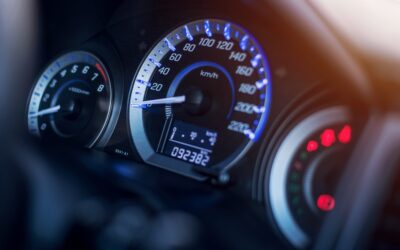The driving theory test is a fundamental part of your driving examination. Until you have passed the theory section you cannot take the practical test and, with its high pass rate of 86%, it has caused anxiety amongst many learner drivers! The best way to deal with the challenge is with effective preparation. If you know what to expect you can be suitably prepared.
What is the goal of the driving theory test?
 In an effort to check that new drivers fully understand the fundamentals of safe driving, road signage and possible hazards, the DVLC introduced a separate driving theory section into the UK driving test in 1996. Composed of multiple choice and video questions, the examination takes place in the DVSA (Driving Standards Agency) theory test centre.
In an effort to check that new drivers fully understand the fundamentals of safe driving, road signage and possible hazards, the DVLC introduced a separate driving theory section into the UK driving test in 1996. Composed of multiple choice and video questions, the examination takes place in the DVSA (Driving Standards Agency) theory test centre.
Examinations and the learner driver
If you have recently finished education or if you are still a student, you will be familiar with the best techniques for best results: solid revision; prioritise learning areas you may find difficult; a good night’s sleep the night before and make notes to jog your memory. Ensure you know how to get to the test centre in advance – you can do without the anxiety of last minute route planning on the morning of the test. Get to the test centre early so you can relax and also go over the notes in readiness for the test.
Do I need to take anything to the test centre?
You will need to prove your identity when you arrive at the test centre. You will need your driving licence which now is simply a photocard. If you have the old style driving licence (the photocard and the paper counterpart) you will need to show both parts.
If you do not have a photocard you will need to bring along a passport as proof of identity. If you do not have the appropriate documents, you will not be allowed to take the test and you will lose your fee.
Is there a set starting time?
Yes. You have 15 minutes’ leeway before the start of the test. If you arrive late, you will not be allowed into the exam room as this will distract the other candidates and you will lose your fee. So ensure you know how you will get to the centre and add a bit of time on for unforeseen travel problems when initially timing the route to centre.
How is the Theory Test structured?
The test is split into two parts: Multiple Choice and the Hazard Perception test.
Multiple Choice
There are 50 questions based on the rules of the road and you have 57 minutes to answer all the questions. Some multiple choice questions will be displayed as a case study. The case study will show a scenario that five questions will be based on. The subject of the scenario focuses on real life examples and experiences that drivers could come across when driving.
You’ll be asked questions taken from the 15 official question categories set by the DVSA. These are; Accidents, Alertness, Attitude, Documents, Hazard Awareness, Motorway Rules, Other Types of Vehicle, Road and Traffic Signs, Rules of the Road, Safety and Your Vehicle, Safety Margins, Vehicle Handling, Vehicle Loading and Vulnerable Road Users.
Hazard Perception
This is an interactive video test where you have to scan different road settings from a driver’s view point and identify hazards as soon as they develop.
Is there a practice test I can take?
Taking as many mock tests as possible before your actual theory test is a great way to pass first time and just pay the one fee. You will find many options across the web that contain official DVSA questions and answers so you can practice as many mock tests as you want.
When can I take my driving theory test?
You can take a driving theory test at any time once you are learning but don’t forget that they are not free – from May 2016 the cost had risen to £23. So if you are simply not ready to take it you could be throwing money away. Get guidance from your driving instructor when is the best time to take the test. Once you pass you have a further 2 years in which to pass your practical test.
How can I book a driving theory test?
The easiest way to book a driving theory test is online. You will need your UK driving licence number, email address and your credit or debit card number.
And remember that while you are practising for your driving test, you’ll need provisional drivers insurance so do get a quote from us today.



